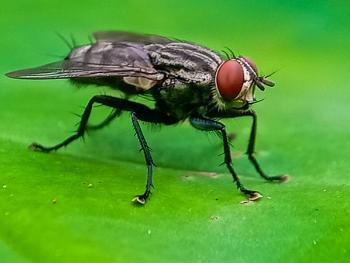
Childhood Cat Ownership May Result in the Development of Schizophrenia
According to three studies, childhood cat ownership may be a possible risk factor for the development of schizophrenia, or other serious mental illnesses, and the explanation might lie in closer examination of the parasite Toxoplasma gondii.
According to three studies, childhood cat ownership may be a possible risk factor for the development of schizophrenia or other serious mental illnesses and the explanation might lie in closer examination of the parasite Toxoplasma gondii.
T. gondi is one of the most common parasites that infect humans and other warm blooded animals, such as cats. According to a
In a recent
Data for the first study came from two questionnairres. The experimental group consisted of 165 members of the National Alliance of the Mentally Ill (NAMI) in 1992. During this time period, NAMI was comprised of 170,000 members with two thirds of its families having at least one member who had been diagnosed with either schizophrenia or bipolar disorder. The researchers found that 84 out of the total surveyed individuals (50.9%) who answered the questionnaire had owned a cat between time of birth and the age of ten, according to the study. A second questionairre was completed by a control group, which also consisted of 165 inidividuals whose families did not have children with mental illnesses; 39.4%, or 65 out of the 165 contorl individuals said that they had cats living in the house during the aforementioned time frame.
A 1997 follow-up survey was administered by interviewers at the Survey Research Center in the University of Maryland, based on the first study’s findings. This survey consisted of a telephone interview that lasted around 20 minutes with members that had been randomly selected. The material covered in this survey consisted of 19 variables, “asking about the mother’s pregnancy, miscarriages/stillbirths, delivery, breast-feeding, developmental milestones and place of residence as well as exposure to dogs, cats, other pets, and farm animals,” according to the study. Between birth and the age of 13, 136 out of the 262 (51.9%) surveyed members admitted to cat ownership; 42.1% of the control members admitted to cat ownership, according to the study. Dog ownership was the more common choice of pet (78.8%) but the study makes note that the difference “was not statistically significant.”
Taking these two surveys into account, Dr. Torrey and colleagues looked at a survey that had been carried out in 1982 at the NAMI annual convention but was never published. This survey, according to Dr. Torrey's study, was two pages long and included questions that covered “conditions of pregnancy, birth weight, childhood illnesses, smallpox vaccination, seizures, age of first referral, illnesses immediately preceding onset, family history of mental illness and rheumatoid arthritis, and cat and dog ownership up to age 17.” The survey found that 1075 of the 2125 (50.6%) surveyed individuals owned a cat between time of birth and 13 years of age. Dr. Torrey and colleagues found that these results were in line with the surveys that had previously been conducted.
When speaking of the implications of this study, Dr. Torrey and colleagues authors reported, “Cat ownership in childhood has now been reported in three studies to be significantly more common in families in which the child is later diagnosed with schizophrenia or another serious mental illness, compared to families in which the child is not so diagnosed. Such a finding, if confirmed in other groups, would suggest that cat exposure in childhood is a risk factor for developing the disease.”
Another
According to a
In the United States there are about 75 to 80 million household cats and an additional 30 to 40 million stray or outdoor cats, which have a higher risk of acquiring T. gondii, according to the
In an email, Dr. Torrey told CBS that “Children can be protected by keeping their cat exclusively indoors and always covering the sandbox when not in use. The CDC also recommends changing the cat’s litter box daily, since T. gondii does not become infectious until 1 to 5 days after it is shed in feces. In addition, avoid feeding cats raw or undercooked meat.”
Newsletter
From exam room tips to practice management insights, get trusted veterinary news delivered straight to your inbox—subscribe to dvm360.




